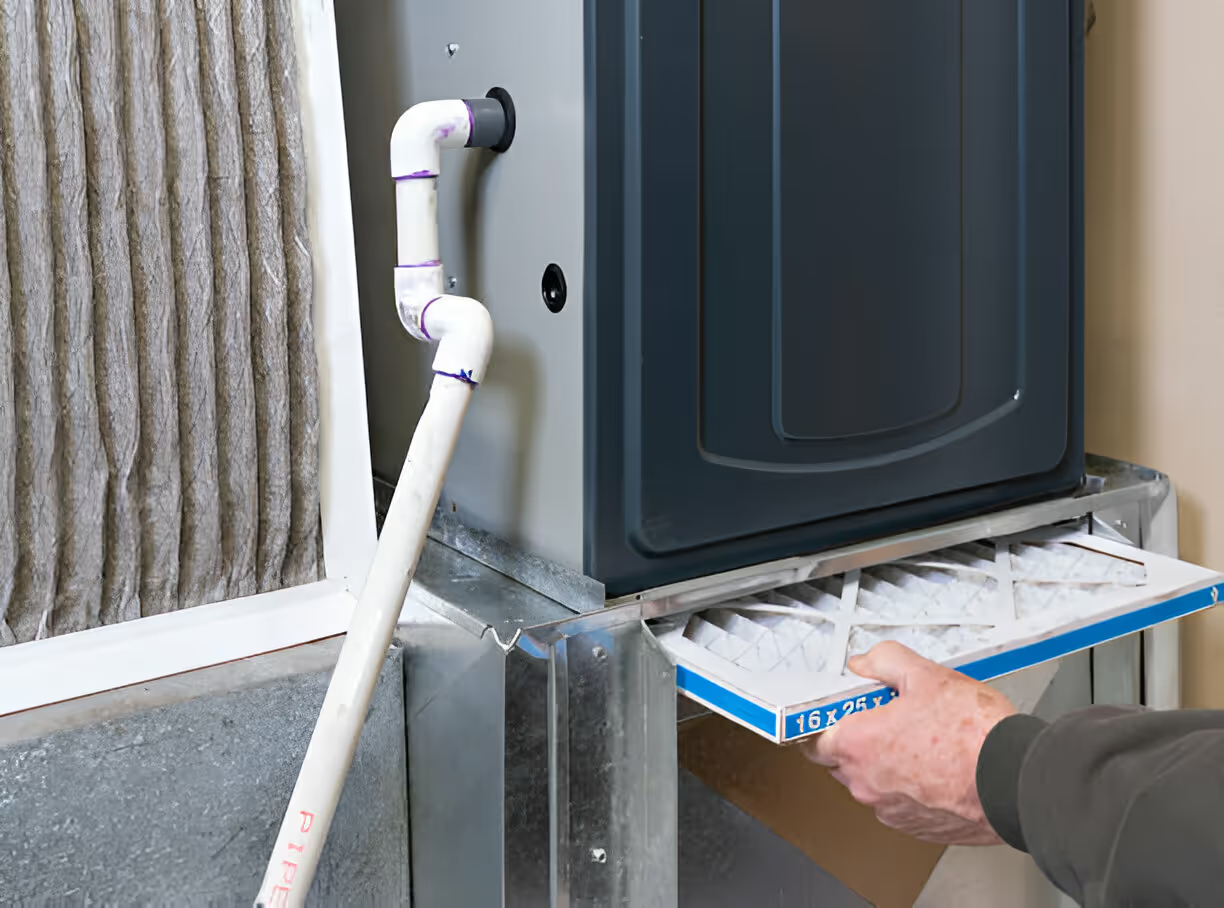Heating Repair in Gibsonton, FL


Why timely heating repair matters in Gibsonton, FL
- Florida humidity and salt air accelerate corrosion on outdoor units and terminals, so small faults can become larger fast.
- Heat pumps are the most common heating source in the area; issues left unaddressed reduce efficiency and raise electric bills.
- Storm season and frequent power fluctuations increase the risk of control board or compressor damage.
- Prompt repair improves safety by preventing electrical faults, carbon monoxide risks (for combustion appliances), and mold growth from uneven heating.
Common heating problems in Gibsonton homes
Homeowners and renters typically call for these issues:
- No heat or intermittent heating in heat pumps or furnaces
- Short cycling (system turns on and off repeatedly)
- Uneven temperatures or cold spots in rooms
- Loud or unusual noises from the outdoor unit or blower
- Reduced airflow or weak vents
- Excessive energy consumption or sudden spikes in utility bills
- Thermostat failures or incorrect thermostat settings
- Frozen outdoor coils or persistent defrost cycle problems on heat pumps
- Refrigerant leaks, indicated by hissing sounds or icy lines
- Electrical issues: tripped breakers, burned terminals, or failed capacitors
Diagnostic and on-site troubleshooting process
A professional heating repair visit typically follows a systematic process to isolate root causes quickly and accurately:
- Initial safety and visual inspection
Confirm power is safe, check breakers and disconnects, inspect for visible corrosion especially on outdoor components exposed to salt air. - Thermostat and control verification
Test thermostat calibration, wiring integrity, and programming; place system into test modes if available. - Airflow and duct assessment
Check filters, blower motor function, duct connections, and vent obstructions that commonly cause airflow problems. - Electrical and mechanical testing
Measure amp draw on motors, inspect capacitors, contactors, relays, and safety switches for proper operation. - Refrigerant and compression evaluation (for heat pumps)
Check pressures, temperature differentials, and look for signs of leaks or undercharge that affect heating capacity. - System performance test
Run the system through a full cycle to verify repairs and confirm stable operation under load.
Technicians will usually document findings and explain recommended repairs in plain language, including which components require replacement and which can be serviced.
Typical repairs and parts replacement
Common parts replaced during heating repair in Gibsonton include:
- Fan and blower motors, bearings, belts
- Capacitors, contactors, relays, and control boards
- Reversing valves or compressors on heat pumps
- Thermostats and sensors
- Defrost controls and heaters
- Refrigerant recharge and leak repair components
- Heat exchangers or ignition assemblies for gas-fired equipment
Parts selection often considers corrosion resistance and suitability for coastal environments. When replacements are needed, reputable repairs prioritize OEM or high-quality aftermarket parts to preserve lifespan and efficiency.
Emergency repair availability and response expectations
Heating failures can be urgent when they affect safety or critical comfort. Local heating repair services typically offer:
- 24/7 emergency repair coverage for safety-related failures and no-heat situations
- Typical emergency response windows of 2 to 4 hours depending on time of day and local demand
- Same-day appointments for non-emergency repairs when available, often within 24 hours
Response times may vary during severe weather events or high-service periods. Technicians will prioritize safety issues, including gas leaks, electrical hazards, and systems posing carbon monoxide risks.
Pricing transparency and what to expect
Transparent pricing during heating repair includes:
- A clear diagnostic or service call fee explained up front
- Itemized estimates for parts and labor before any replacement work begins
- Explanations of repair options: repair vs part replacement vs system replacement when relevant
- Information on any permit needs for certain repairs or replacements
Rather than vague quotes, look for estimates that break down labor hours, parts costs, and warranty coverage so you can make an informed decision.
Warranty, guarantees, and workmanship
Reliable heating repair in Gibsonton usually includes:
- Manufacturer warranties on replaced parts, honored per the part supplier’s terms
- A workmanship guarantee from the technician or service provider covering labor for a stated period (common ranges are 30 to 90 days for repairs)
- Documentation provided after service, including what was performed, parts installed, and warranty terms
Preserving warranty validity often requires retaining service records and adhering to recommended maintenance schedules.
Maintenance tips to reduce repair needs
Simple homeowner steps can extend equipment life and prevent many common issues:
- Replace or wash filters monthly during heavy use periods to maintain airflow and efficiency
- Keep outdoor units clear of debris and rinse salt buildup periodically from outdoor coils
- Ensure vents and returns are unobstructed and balanced throughout the home
- Have annual preventive maintenance checks timed before winter or peak heating usage
- Test carbon monoxide detectors and check for signs of leaks if you have combustion heating
Benefits of prompt, professional heating repair
- Restored comfort and consistent indoor temperatures
- Improved energy efficiency and lower monthly utility costs
- Reduced risk of larger, more expensive failures through early intervention
- Safer operation for gas and electrical heating systems
- Longer service life for key components with fewer emergency disruptions
Heating repair in Gibsonton, FL requires sensitivity to coastal corrosion, humidity-driven issues, and regional weather patterns. Professional diagnostics, transparent pricing, and reliable warranties help homeowners make confident decisions that protect comfort and investment in local homes.
Service Areas


